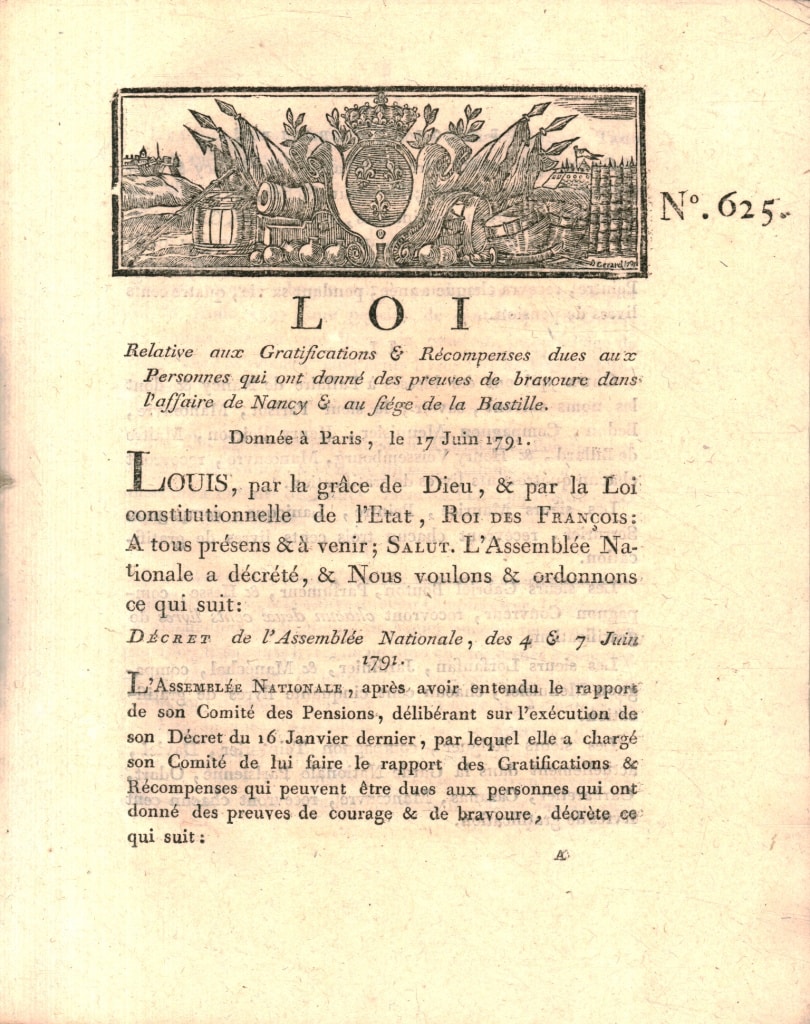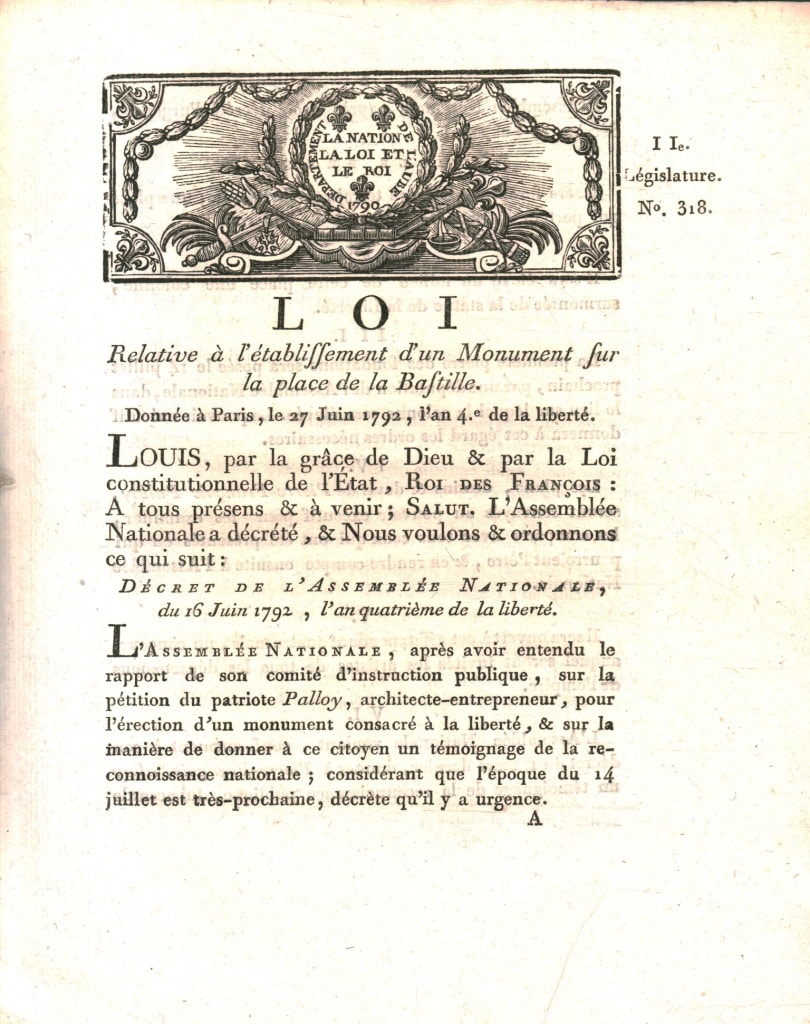
A Summer in France and the 14th of July Celebration
One summer, I was in France with my family, and we had the fortune to participate in a tiny village in Burgundy in the celebration of July 14th: the entire town gathered in the square at long shared tables, with banquets serving wine and snails, garlands of tricolor flags against the sky at sunset, and at midnight fireworks to end the festivities. A truly popular celebration in memory of the symbolic Storming of the Bastille that marks the beginning of the French Revolution. Imagine then the emotion of finding myself holding three legal documents directly related to this epochal event.
The Storming of the Bastille

The first document presents a law signed by Louis “by the grace of God & by the constitutional law of the state, King of the French” on June 17, 1791: the title reads “Law concerning the gratifications and rewards due to people who have shown heroism in the affair of Nancy and the siege of the Bastille”. The four pages of the document list the names of workers, artisans, and soldiers who fought at Nancy and under the Bastille, staying injured or maimed, and to whom the state grants the right to a pension; even Dr. Souberbielle, a surgeon, will receive compensation for the care provided to the injured at the Bastille.

The second document, dated June 27, 1792, topped with a beautiful engraving celebrating La Nation, La Loi et le Roi, refers to a decree by the National Assembly on June 16: with some urgency due to the impending deadline, the petition of citizen Pierre-François Palloy, architect-entrepreneur, for the renovation of the ancient site of the Bastille is accepted. Accelerating the demolition work, a square will be created that will be named Place de la Liberté, with a column at the center topped with a statue of liberty (artists from all departments will be invited to a competition to select the statue): on July 14, the first stone of the foundations will be laid by a representative of the National Assembly. Palloy, as a reward for his work, will receive a plot of land from the demolition of the ancient fortress.
The “Storming” of the Tuileries
Less than a year later, a Decree from the National Convention ushers us into a new phase of revolutionary history: on April 25, 1793, the National Convention orders the excavation of the wooden and iron box placed inside the first stone of the Liberty column and to destroy “the commemorative documents it contains, which have characters contrary to the general system of freedom and equality of the one and indivisible Republic”; they will be replaced by others chosen by the National Convention. Indeed, with another “storming,” that of the Tuileries, and the fall of the monarchy on August 10, 1792, the contents of the first stone’s dedication were no longer in line with the new constitutional order: the King was now out of the picture, imprisoned at the Temple.
History proceeds, leaving a trail of small traces, like these papers, that still speak to us more than two centuries later. And in this lies the beauty of our everyday work.








